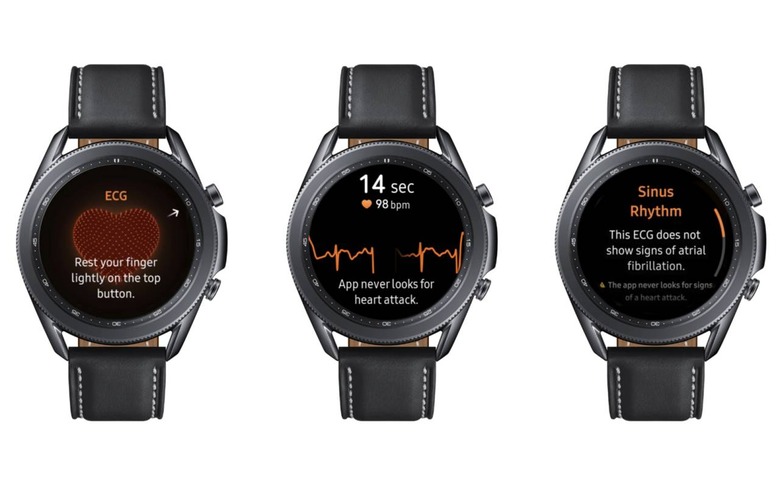Samsung's ECG Tracking Arrives On Galaxy Watch 3 And Active 2
Samsung is enabling ECG readings for its Galaxy Watch 3 and Galaxy Watch Active 2, upgrading the health-tracking feature having recently received FDA approval. The ability to take electrocardiogram readings puts the two smartwatches in relatively rare company, including the Apple Watch and a handful of others.
Back when Samsung first unveiled the wearables, FDA approval was still in the pipeline. The update will be delivered through the companion app, but you'll be able to access it through through the smartwatch itself.
That will involve opening the new Samsung Health Monitor app, resting your arm on a flat surface, and then putting a fingertip on the top button on the side. After a short period of measurement, an ECG reading is taken, and then classified as Sinus Rhythm or AFib.

It's possible to append any symptoms you might be feeling at the time, such as fatigue or dizziness, and then send the results and that report as a PDF through the Samsung Health Monitor app on your phone. That way, you can share results with a doctor or other healthcare provider. The Galaxy Watch 3 supports oxygen saturation tracking, too.
As you'd expect, there are some caveats. For a start, you'll need to be using the watch with a Samsung Galaxy phone running Android N or newer. Much like the systems from Apple and others, the ECG monitoring isn't intended for those with known arrhythmias other than atrial fibrillation, or indeed users under 22 years old.
"Users should not interpret or take clinical action based on the device output without consultation of a qualified professional," Samsung warns. "The ECG Monitor app is not intended to replace traditional methods of diagnosis or treatment and is for information purpose only."
Even so, as we've seen from Apple Watch and others, making people more aware of things like atrial fibrillation can be an important step. There's no shortage of stories of people discovering they're having heart issues because of their smartwatch flagging something erroneous, even if the wearables aren't officially intended to be used as a diagnostic tool.
